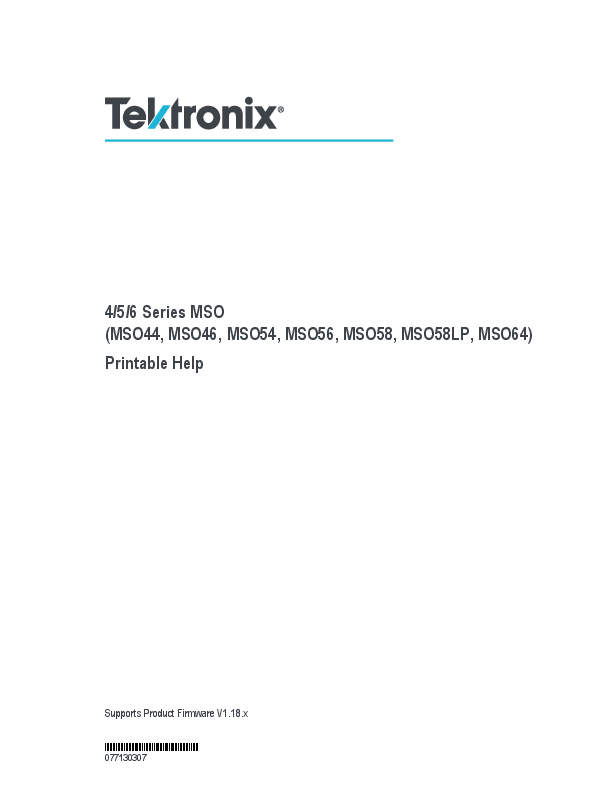Introduction to the 4/5/6 Series MSO
This document serves as the comprehensive Printable Help guide for the Tektronix 4/5/6 Series Mixed Signal Oscilloscopes (MSOs).
It provides detailed information for the following instrument models:
- 4 Series MSO: MSO44, MSO46
- 5 Series MSO: MSO54, MSO56, MSO58, MSO58LP
- 6 Series MSO: MSO64
Users will find extensive coverage on instrument features, essential accessories, step-by-step installation procedures, descriptions of front and rear panel controls, and an overview of the user interface elements. This guide is designed to help users effectively operate and configure these advanced oscilloscopes for various testing and analysis needs.
For additional resources and support, please visit the official Tektronix website at www.tek.com.
